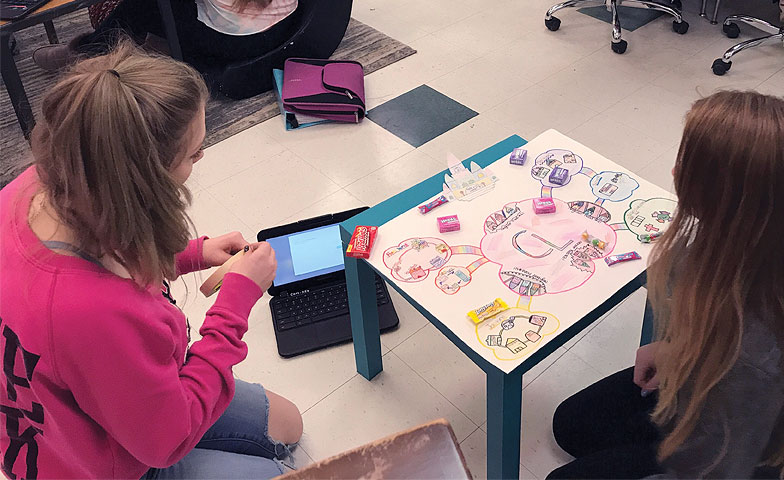Independent reading assignments open students’ minds and hearts
One of my favorite days of the year is when I give students their first independent reading assignment. I believe the best way to keep the love of reading alive is for students to read what they love and share their experience with their peers in a way that is novel and doesn’t detract from the experience of reading itself, but instead deepens it.
When I hand out the menu of options, I share some examples of what others have done before them. I watch as my self-proclaimed “theater geeks” bubble over with excitement that they can write a skit, do a monologue, or design a set for a scene from the book. They can barely contain themselves when I tell them about my student a few years ago who staged a wake for a character in the book who had not had a proper funeral, at least according to my student.
As I tell them about the sheet music a young pianist handed in, along with an audio file that she had created, I can see the musicians begin to wonder what they might play to accompany their book. I encourage them to use Garage Band, confer with their music teachers, and create music that reflects the climax of the book, or maybe is a great resolution of the story. For those less talented at composing, they have the option of creating an “album” of music to accompany the book—a mix tape for a generation whose playlists are always handy.
I have sculptures in my room, paintings, drawings, and plenty of videos of acoustic sets my students have performed or scenes they’d recreated. There’s a short parody film, a longer video of students acting out a scene from Divergent, and copies of monologues students have written and performed.
The art and music teachers in my building love seeing the excitement students bring to their task, and I love how careful my students are to capture just the right emotion or focus on a specific symbol. It is an amazing chance to collaborate across the curriculum when we can help children translate the emotional responses they have from reading into art or music. There’s always a detractor here or there, but I show them the written response where students reflect on the entire experience of creating as a response to reading, and I usually have converts to this way of thinking. Most importantly though, I have what I call “full contact” reading experiences that deepen learning while building the social and emotional needs of students as well.
In a few weeks, I’ll have a student come up to me and say, “I have this idea …” and we’ll have an amazing conversation about their independent reading. I’ll end up approving something that I can’t quite get my mind around, and teachers in my building will help a child’s vision develop. Independent reading can be an amazing portal into the hearts and minds of our students if we are willing to loosen the reigns of control long enough to allow responses that are more than reading logs and response questions.


